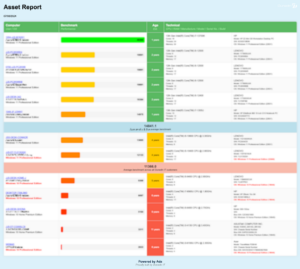The Hidden Costs of Outdated Computers
Welcome to your Computer Asset Report. At Dunedin IT, we understand the importance of keeping your technology up-to-date and running smoothly. To make this as simple as possible, we’ve designed this report using a traffic light system to help you quickly see the status of your computers.

